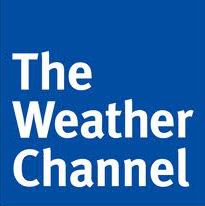Public’s Weather Appetite Seems Insatiable

ALEXANDRIA, Va. ― “Everybody talks about the weather but nobody does anything about it.”
That famous quote is usually attributed to Mark Twain, but it was actually stated by Twain’s friend and occasional collaborator, Charles Dudley Warner. However, it goes to show that more than 100 years ago, as now, people are always interested in the weather.
There’s still not much we can individually do about changing the weather, but we now have many more ways than Twain and Dudley ever had to learn about and prepare for it. Some of those ways are coming to your mobile devices and TVs, in the form of new apps, services and broadcast channels.
The Weather Channel, which is a property associated with NBC Universal, has been providing 24/7 weather reports for decades. Still, other weather operations have found ways to deliver competing services, and NBC affiliates have been known to use these other weather providers.
A recent one is WILX, the NBC affiliate for Lansing and Jackson, Mich., which picked up WeatherNation TV and will broadcast it on the station’s 10.2 channel. WeatherNation TV is on a variety of stations across the country, including big markets such as Washington, D.C., Atlanta, Boston, Minneapolis and Denver.
SECOND-SCREEN APPS

In the meantime, the Weather Channel announced that it uses MongoDB to serve data for the networks iOS and Android apps. More than 40 million users have downloaded the apps, which provide real-time weather and forecasts, as well as severe weather alerts.
The professional video industry's #1 source for news, trends and product and tech information. Sign up below.
What drives all this technology in the service of providing weather information to consumers? For a start, even more than 100 years ago, it was obvious to Twain and Warner that we are fascinated with the weather. Why not put technology to work to deliver it to weather-starved consumers?
And the technology is as new as using the cloud to tailor your weather information to your specific requirements. It is applications such as this that will make using the cloud less mysterious and speed its adoption by more applications. Today, the weather―tomorrow, the news. Or something.
As for a weather service on a secondary digital channel, that’s been common since digital TV began more than 10 years ago. WUSA in Washington, the CBS affiliate, put its weather radar display on its secondary channel at least that long ago, and it’s still there today―along with forecasts and an additional secondary channel that came just a couple of years ago. It’s one of the secondary channels that I have watched the most over the years, proving Warner’s statement.
Bob Kovacs is the former Technology Editor for TV Tech and editor of Government Video. He is a long-time video engineer and writer, who now works as a video producer for a government agency. In 2020, Kovacs won several awards as the editor and co-producer of the short film "Rendezvous."

